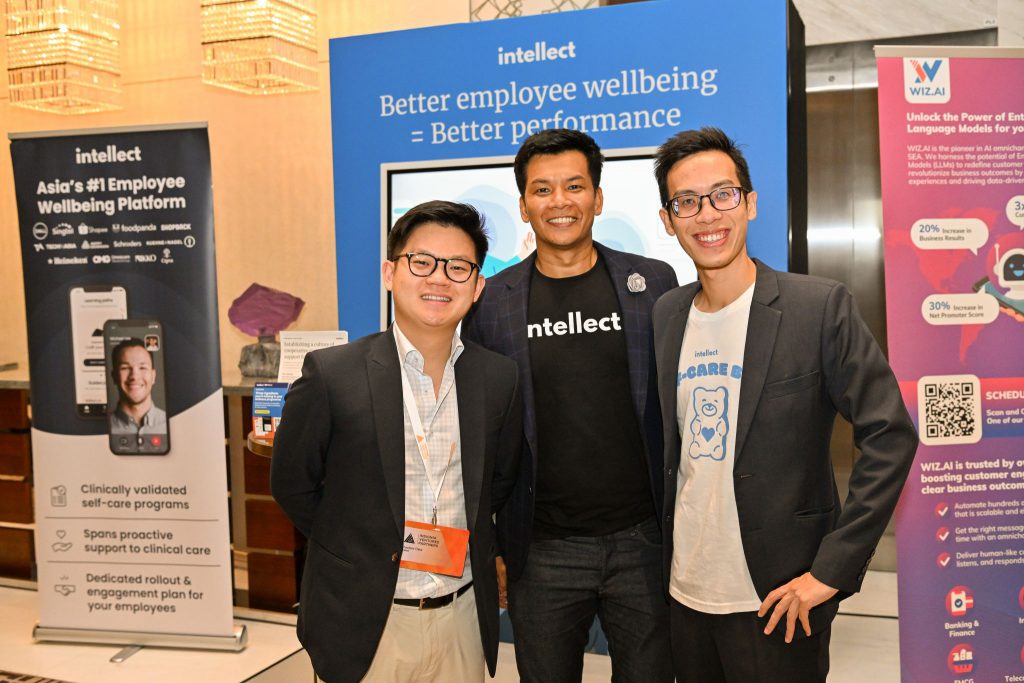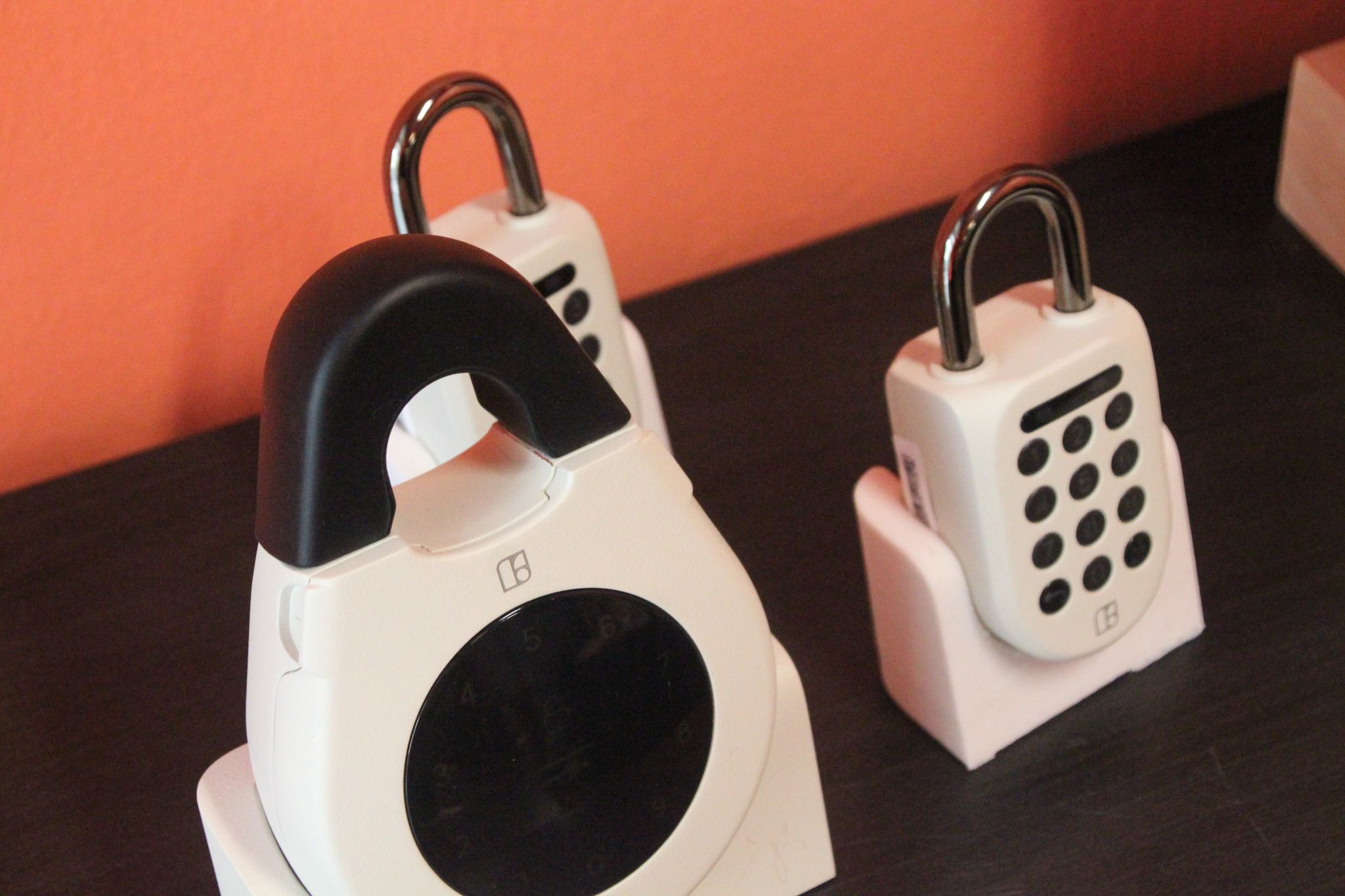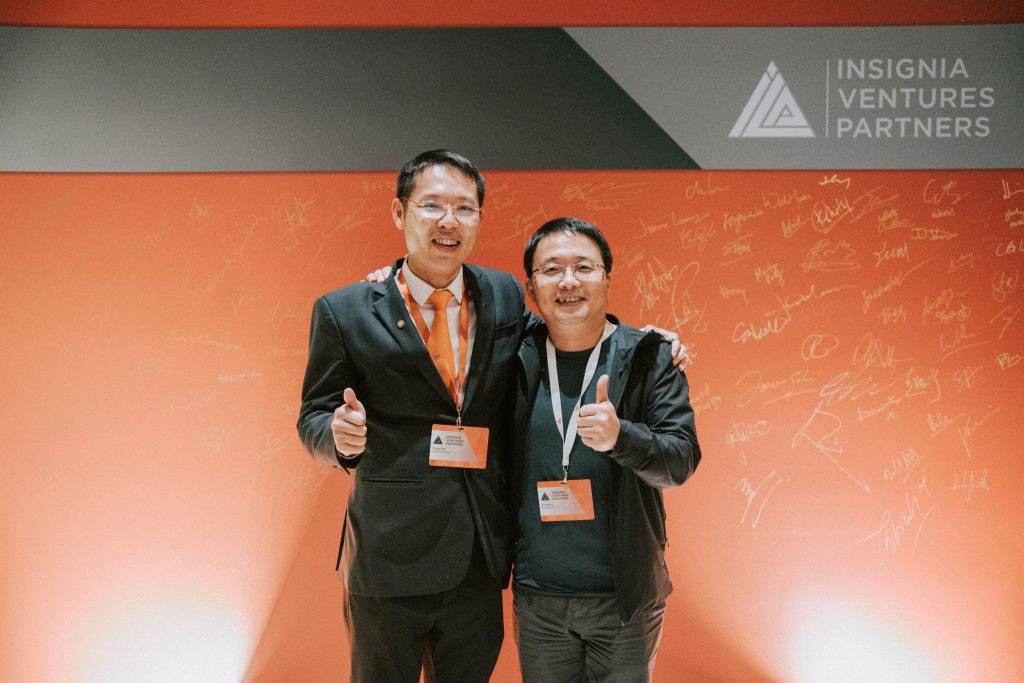Before, the world viewed Southeast Asia as a region to replicate global businesses. The meta was to build a startup that was “X for Indonesia” or “Y for Southeast Asia”.
But today, it may no longer be enough to build in Southeast Asia or in Indonesia to become a highly valuable company (valuable enough to IPO in the US, as a standard). The meta is now to build for the world, and that means introducing products that can compete on the global stage.
Over the past month we compiled five case studies and five learnings from Singapore companies and their paths to becoming global companies (across varying stages, industries, and business models from enterprise to B2C) and expanding beyond Singapore and Southeast Asia:
- Leverage customer presence in other markets (for enterprise) or partner / investor presence in other markets (for consumer platforms) to incentivize and smoothen market expansion strategy. (See Intellect case study on LinkedIn)
- Productize platform to consolidate customer experience and strengthen upsell capabilities across markets, as well as reduce external dependencies and costs managing global operations. (See igloo case study on LinkedIn)
- Ensure synergies are present across product offerings, both from a sales (e.g., how can sales patterns for one product be used to better sell another?) and operations perspective (e.g., how can supply chains be optimized for several SKUs?). (See Rainforest case study on LinkedIn)
- Leverage government and local ecosystem support to lower costs of go-to-market (esp. around when introducing novel products into a market) (See WIZ.AI case study on LinkedIn)
- Market expansion is not measured solely on individual market potential, but how each market’s competitive advantages can be cross-pollinated to create overall gains for the business. These accumulated compensations, when managed well across markets by company leadership, could paint a bigger picture that allows the business to achieve both profitability and scale. (Scroll to end for Carro case study)
First Way to Build a Global Startup from Southeast Asia: Stand on the shoulders of giants
When Intellect burst onto the scene, they were a wildly popular self-care app that rapidly crossed a million users. While this app was used by people across the globe, what really cements the company’s global presence is their focus on becoming Asia’s top employee wellbeing platform. By serving multinationals from Schroders to Singtel, the company was able to quickly gain operational exposure to multiple markets.
This has meant being able to build localization into their platform (e.g., providers / therapists / clinicians) to meet the needs of users across different geographies, as well as scope to cover all the bases of an organizations’ needs for their employees’ wellbeing (self-care app, certified therapists, proprietary EAP, management for HR leaders, Intellect Clinic, etc.).
This has been critical to both provide adoption in an industry where traditional EAPs have not been taken up (1-3%) as much as Intellect’s offering (30-40%), and enable business leaders to tie organization-wide usage of the platform to ROI.
What’s the learning here? 🤔
👉 Going global is not always about going from one market to another, one at a time — sometimes it is about finding the right customers (in this case, multinational enterprise) to make scale make business sense and quickly test and mature the expansion capabilities of the company. Of course, this does not apply to all types of products, but it is universal to always pay attention to what customers can reveal about future growth.
As CEO Theodoric Chew put it in our podcast, “Our goal is to work with the largest employers and the largest insurers. We are the APAC-wide provider of mental health benefits for Dell, one of the world’s largest companies, for companies like Singtel across the region APAC-wide, Foodpanda, and more.
So that means we really have to take a regional [focus] from day one. How do we build care that is localized but at the same quality across the region? So we have built a repeatable playbook where we partner with local professionals, local translators, and have a lot of QA and vetting processes to make sure that what we’ve built is not just translated, but actually very contextualized and evidence-based.”

Photo taken from the Insignia Ventures Partners Annual Summit: L-R, CEO Theodoric Chew, VP of Revenue Karn Kongsawat, Head of Marketing Frank (Yu Hang) Ng
Second Way to Build a Global Startup from Southeast Asia: Productize the platform
As platforms scale globally, they become more exposed to external shocks. In order to de-risk externalities and have greater control on growth, companies will cut down on excess operational baggage, diversify sources of cost and capital, and, as we emphasize in this edition of this series, productize their platform (aka consolidating all products and services within a continuous, monetizable user experience).
Such was the case of smart access company igloo, now with more than 1500 enterprise customers globally integrated with their productized platform. More than 50% of them actually come from the US.
But this expansion into the US and Europe from Singapore was not easy, especially for a company with hardware (in particular, chipsets) as part of its product set, and more so during the pandemic.
During the pandemic, chipset prices rose by 5x and shipping was broken up by lockdowns. Apart from diversifying their supply chain, they also worked on productizing the chipset that sits in all their products into what they call the Generation 2 Igloo Chipset.

Photo of their first Airbnb lock and lock model sent into space, taken from Insignia Ventures Partners Annual Summit, during a tour of the igloo office in BLOCK71 Singapore
Another way they productized is through the Iglooconnect platform, where they consolidated integration efforts across all industries and sectors.
As CEO and co-founder Anthony Chow (top photo) explained on our podcast, “Today, over 1,500 businesses have integrated with us, and we’re listing them on the iglooConnect platform, where businesses and consumers from any industry can go on it. They can purchase a device that is integrated with our platform and also a software service that’s integrated with our platform so that they can enjoy the full experience of smart access, not just a product itself, but a full experience that goes through an integrated ecosystem that we have.”
This convergence has not helped to reduce external dependencies and costs, but allowed them to double down on their key market of B2B (which ties back to The First Way).
Anthony adds, “Whether it’s in the property management sector in the US or even vacation rental or the sharing sector over in Europe, continuously delivering the best customer experience to them and making sure that every lock works very well for every workflow is crucial for us to maintain the trust and the service level that our customers require of us, so they continue to work with us and scale up with us.”
Third Way to Build a Global Startup from Southeast Asia: Product Synergies
This is Stevie the Sloth. 🦥 Stevie is not just any stuffed animal 🧸 — it’s a weighted stuffed animal, designed to promote calmness and concentration.

Photo taken from Insignia Ventures Partners Annual Summit
Stevie is one of many other products of the Lilly’s Love brand, which in turn is part of Singapore-HQ’ed ecommerce house of brands for moms and babies Rainforest.
With 16 brands in its portfolio, Rainforest largely distributes in the US at this point — but how did a Singapore company end up managing a brand with products like Stevie the Sloth selling an ocean away?
It’s natural for a company to expand into multiple products and services as they scale and enter more markets, but at the same time, it is easy to get sucked into a black hole of costs as the business scales. That is, if there’s no convergence.
1️⃣ This convergence manifests on several levels. In the case of Rainforest, the company’s early days looking to FBA (Fulfilled by Amazon) brands made the founders realize their portfolio needed to have synergies (e.g., learnings that could be more easily translated across brands).
As CEO JJ Chai explained in a panel in our recent Annual Summit: “After the first few acquisitions, we started realizing that running a car parts brand and a cereal brand has very few synergies, and it is really complex to drive growth. And we decided to focus on a specific segment…for us three co-founders, including myself, we were all three parents, six kids amongst all of us…we understand enough of the parenting journey and the number of products that come into your life once you have a kid and decided to focus on the maternity and kid space as the target category and audience.”
2️⃣ Convergence also needed to manifest post-acquisition, and applies just as much to Rainforest’s operations as it does for their brands.
As CFO Jason Tan explained in our podcast earlier this year: “Acquisition is just a means to building up the portfolio. What’s equally, or even more important, is how do we build a brand post-acquisition to realize its potential. In my role, I have a wide and holistic view of everything from fundraising to the forecasts. Having this holistic view is important…for Rainforest just because of the interconnectivity amongst all these functions.”
More concretely, Rainforest also focused on developing an internal ERP to better optimize how they leverage the supply side to grow their brands, critical for a 100+ strong team spread across 15 countries.
✍️ The good news about leveraging convergence for scale is that if done right, the impact compounds the more the business scales. It can create a flywheel of learnings and operational efficiencies, minimizing risks and costs that can quickly build up as more products like Stevie the Sloth are introduced to more parents globally.
Fourth Way to Build a Global Startup from Southeast Asia: Finding your support systems
Singapore is clearly a destination for entrepreneurial talent from all over to set up companies, not just for Southeast Asia, but for the world. But how can entrepreneurs make the most out of the value Singapore has?
WIZ.AI was founded by Jianfeng Lu (Chairman) and Jennifer Zhang (CEO), Chinese tech entrepreneur and venture capitalist respectively with prior experience leading multinational companies.

Photo with Yinglan Tan and Jianfeng Lu taken from Insignia Ventures Partners Annual Summit 2022
When they first started WIZ.AI in Singapore, it was quite the challenge — not just because they weren’t locals but because they were introducing localized voice AI solutions (e.g., talkbots able to naturally speak in Singlish, among other accents, dialects, and languages) to a pretty much nascent market
“At the beginning, nobody knew how to deploy voice local accent AI…” shared Jennifer in a CNA interview this year.
Through the Startup SG Entrepass program, the WIZ.AI founders were able to engage with the government and open doors to access the “sizeable pool of innovation-ready corporates and MNCs that could work with us to “testbed” our product,” as Jianfeng shared in a 2022 interview with Startup SG.
He added, “[Entrepass’s] visa programme was easy to apply and helped us to build our first contact with the government, opening doors to access support in Singapore. We were accredited as part of the Infocomm Media Development Authority (IMDA)’s Accreditation@SGD programme. As a young startup, this positioned us as a qualified contender to government agencies and large enterprises.”
And it was through this, along with the support of their earliest investors, that they secured their first enterprise customer. Their pioneering use case for Singlish enabled them to then replicate this success with other languages, across industries, and develop other related AI solutions, like LLMs.
Now four years on, they have over 300 customers across 17 countries, many of which are Fortune 500 companies, with products that extend into Spanish as well for the Latin America operations of multinationals.
While Singapore has built its brand on the maturity of their programs supporting global entrepreneurs and internationalization, these types of infrastructure are not unique to the country, especially as other emerging markets are developing their own platforms to improve the ease of doing business.
Regardless of where these entrepreneurs come from, increasing the diversity of experienced business leaders can be valuable to maturing a startup ecosystem. And this diversity can only be achieved with support systems available for them to tap into.
Fifth Way to Build a Global Startup from Southeast Asia: Paint the Bigger Picture
How do you justify market expansion across markets that are immensely diverse and fragmented?
Market expansion is not measured solely on individual market potential, but how each market’s competitive advantages can be cross-pollinated to create overall gains for the business.
What a market may lack in scale could be compensated by average revenue per user (or even higher margins on each sale), and vice versa.
Beyond market share and revenue, a market may also be a key spot to unlock strategic partnerships or access to lower cost capital / liquidity.
These accumulated compensations, when managed well across markets by company leadership, could paint a bigger picture that allows the business to achieve both profitability and scale.
In the case of Carro, when it launched in Japan through a joint venture with Softbank, was not simply expanding for the sake of being in Japan or going global.
As Aaron shared in a panel back in 2022: “…Oftentimes I get asked by other investors, “Why did you enter Japan?”…it’s one of the largest economies in the world, with [more than 5 million used cars sold] per year. It’s a much bigger market alone than Southeast Asia combined…As a result, this is super interesting for us because even if we take [for example] 10% of that market, it’s growth for us. While it may not be growth for them locally, it’s still growth for us as a company. As a result, I like to think about life moving forward as not just Southeast Asia, but even the broader Asia Pacific. As our companies mature, we can go out [to these markets].”
Painting this bigger picture doesn’t end with the initial go-to-market. At this point Carro had already developed a well-oiled ecosystem with multiple business lines and adjacencies to inform and fuel expansion. And even in markets closer to home, like Malaysia (which they entered in 2019), they continue to develop this ecosystem. For example, this year they announced the initial roll out of aftersales business Carro Care in Malaysia, powered by their strategic partnership with blue chip automotive player Jardine Cycle & Carriage.
This flywheel creation goes hand in hand with unlocking the competitive gains from market expansion. As CFO Ernest Chew shared in a 2023 podcast episode, “Whenever we sell a product or service. We want to be able to cross sell and upsell more products across our ecosystem to improve overall unit economics and build recurring income streams. We want to build a flywheel which powers all our business segments so that we don’t operate in silos.”
The VC View on Internationalization
Will it be possible for us to see a startup homegrown in a Southeast Asian market but scale up globally to the level of Amazon or Bytedance?
“In the next five years, we’ll see a lot more startups homegrown in Southeast Asia but growing internationally,” — Yinglan Tan shared at a panel on the future of Asia’s startup nucleus on Day 2 of #FIIPriority Hong Kong by the Future Investment Initiative Institute, held just last Thursday and Friday.
While we can’t be certain whether these startups going global will be at the scale of FANG or BAT, it is clear that there are increasing incentives for startups in Southeast Asia to take on markets beyond the region, whether that’s the opportunity to drive revenues and profitability (say in higher ARPU markets) or retain multinational enterprise customers (by serving their other offices). In a market that favors self-sustainability, expanding one’s TAM horizon (beyond just a single market or SEA) may be the answer.
His fellow panelists, Orbit Startups Co-Founder and Managing Director William Bao Bean, 500 Global COO and Managing Partner Courtney Powell, Lalamove COO Paul Loo, and WeLab Founder and Group CEO Simon Loong, also weighed in on this topic — and we summarized insights into three key elements of operating a global company.
Paulo Joquiño is a writer and content producer for tech companies, and co-author of the book Navigating ASEANnovation. He is currently Editor of Insignia Business Review, the official publication of Insignia Ventures Partners, and senior content strategist for the venture capital firm, where he started right after graduation. As a university student, he took up multiple work opportunities in content and marketing for startups in Asia. These included interning as an associate at G3 Partners, a Seoul-based marketing agency for tech startups, running tech community engagements at coworking space and business community, ASPACE Philippines, and interning at workspace marketplace FlySpaces. He graduated with a BS Management Engineering at Ateneo de Manila University in 2019.